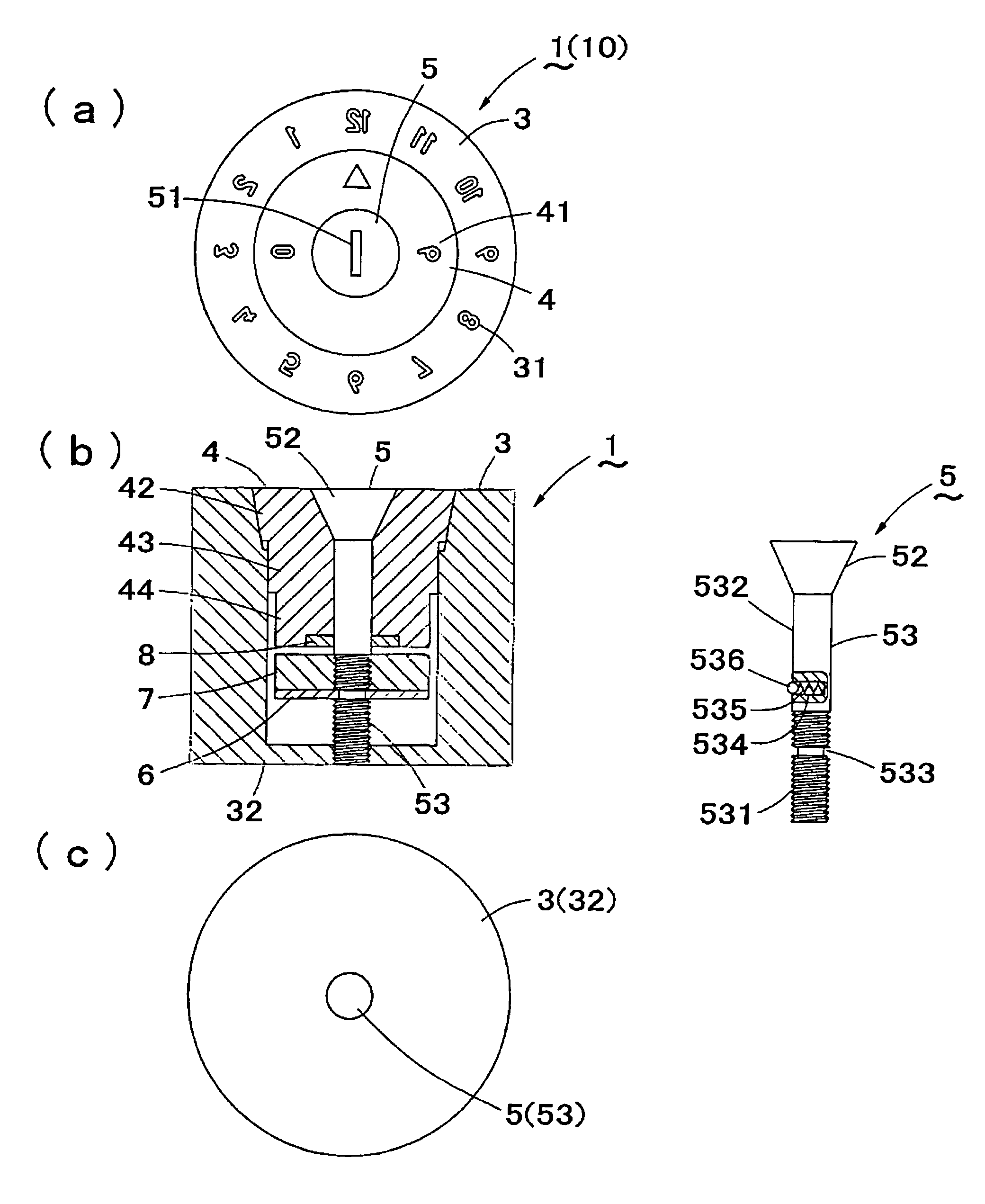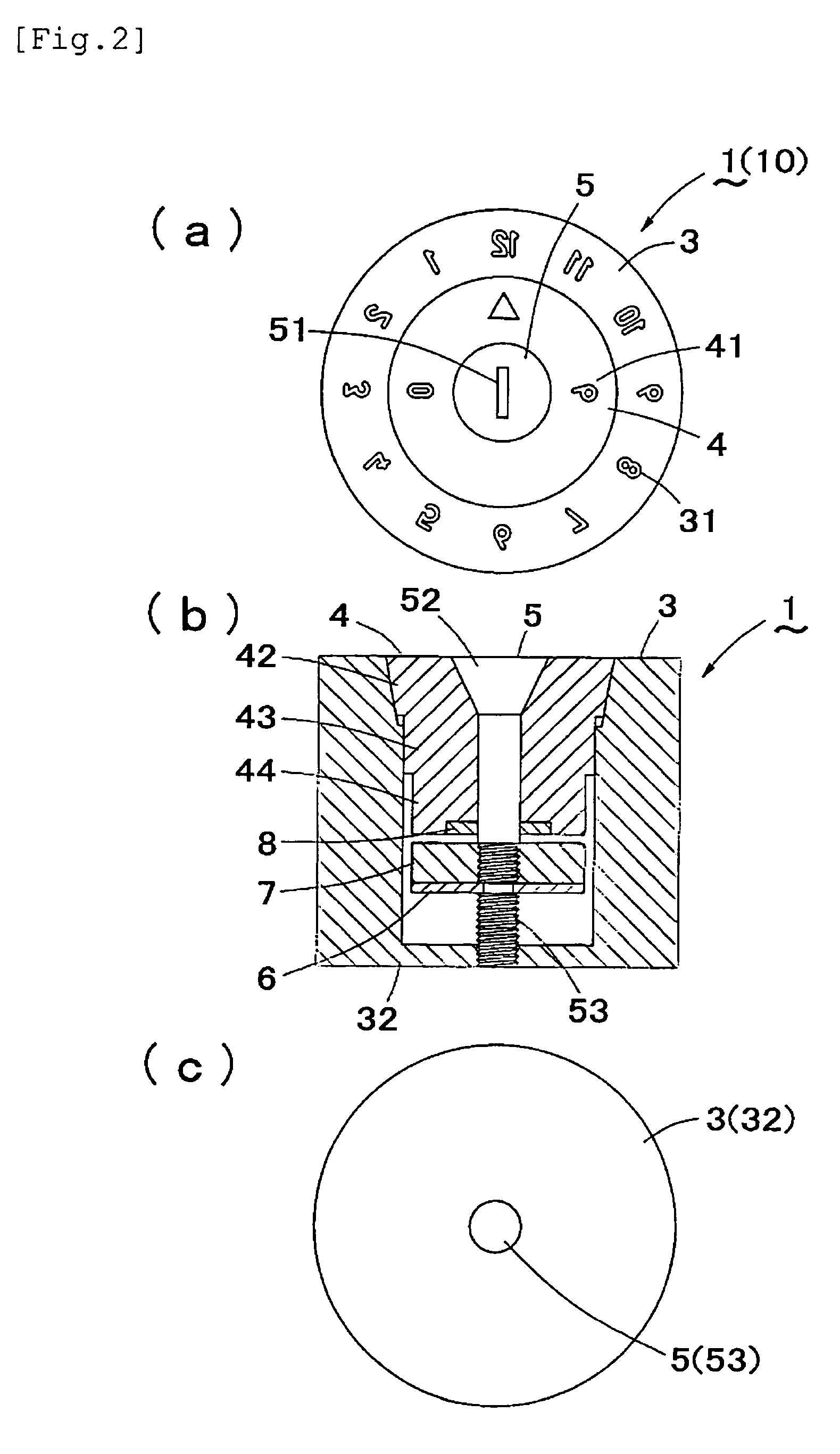Marking device
a marking device and marking technology, applied in the field of marking devices, can solve the problems of high operability, defective demolding process, and higher pressure at the border, and achieve the effect of less grooves, sufficient engagement, and reduced size of the marking devi
- Summary
- Abstract
- Description
- Claims
- Application Information
AI Technical Summary
Benefits of technology
Problems solved by technology
Method used
Image
Examples
Embodiment Construction
[0060]FIG. 1 shows the marking device of the present invention attached to the molding device.
[0061]The molding device (2) comprises a fixed mold (21), a movable mold (22) approaching or separating from the fixed mold (21), and a movable plate (23) connecting to the movable mold (22) and an actuator (not shown). A force from the actuator is transmitted to the movable mold (22) via the movable plate (23), so that the movable mold (22) can be contact with and apart from the fixed mold (21).
[0062]The fixed mold (21) includes an injection outlet (211) from which a molten material such as a molten metal or a molten resin is injected.
[0063]The fixed mold (21) also includes a protruding part (212) protruding downwardly around the injection outlet (211). The movable mold (22) includes a concave portion (221), in which the protruding part (212) of the fixed mold (21) moves. A volume of the protruding part (212) is smaller than that of the concave portion (221), and the cavity (200) in a pred...
PUM
| Property | Measurement | Unit |
|---|---|---|
| coefficient of thermal expansion | aaaaa | aaaaa |
| temperature | aaaaa | aaaaa |
| melting point | aaaaa | aaaaa |
Abstract
Description
Claims
Application Information
 Login to View More
Login to View More - R&D
- Intellectual Property
- Life Sciences
- Materials
- Tech Scout
- Unparalleled Data Quality
- Higher Quality Content
- 60% Fewer Hallucinations
Browse by: Latest US Patents, China's latest patents, Technical Efficacy Thesaurus, Application Domain, Technology Topic, Popular Technical Reports.
© 2025 PatSnap. All rights reserved.Legal|Privacy policy|Modern Slavery Act Transparency Statement|Sitemap|About US| Contact US: help@patsnap.com



